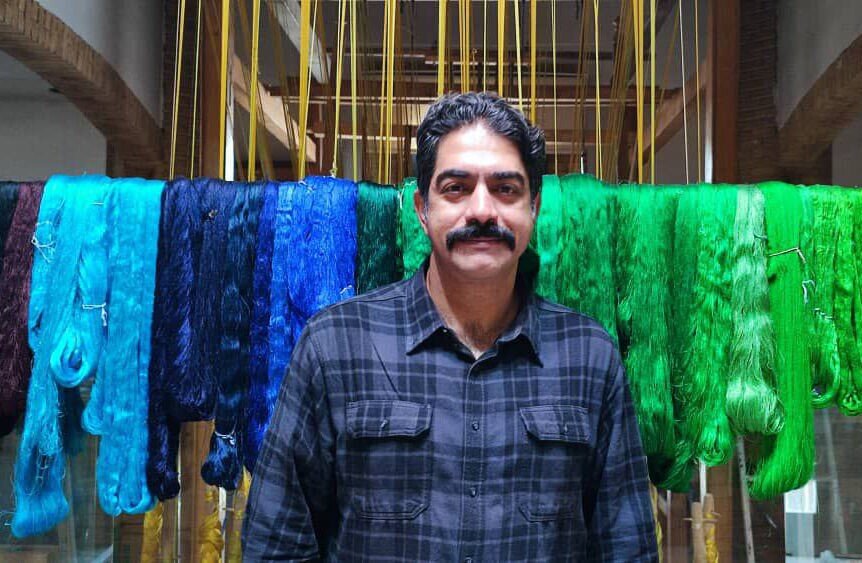Resilience, missing link in sustainable development of handicrafts

TEHRAN — Hojjatollah Farahani, a university professor and researcher, has highlighted the crucial role of empowering artisans with resilience and endurance to navigate inevitable crises.
He emphasized leveraging indigenous capacities as a means to minimize damage and achieve sustainable development.
He told IRNA: “We plan to launch a workshop which concentrates on the occurrence of crises in human societies is inevitable. Whether these crises are natural or human crises, such as war, crises have always existed simultaneously with human life, and what is certain is that the way we face them and successfully pass through them with fewer losses is a vital condition that has always allowed human societies to maintain their continuity and stability over time.”
“The workshop I am going to hold is called “Handicrafts in Times of Crisis: Strategies for Resilience, Survival, and Reconstruction”, and within this workshop, we are going to discuss ways in which we can have practical solutions for resilience in times of crisis and create a platform for survival and reconstruction after the crisis. Handicraft businesses are highly vulnerable during times of crisis because their local ecosystems are not large. However, by training and promoting the handicraft activists in rural environments, small towns, and even large cities, this vulnerability, or part of it, can be greatly reduced and prepared to anticipate the necessities needed to deal with the crisis in their workshops, and to know how to maintain their businesses and what actions to take after the crisis to turn the existing threats into opportunities.”
He added: “What is obvious is that one of the characteristics of the crisis is the combination of threat and change. In fact, we should not see the crisis from the negative side. There are opportunities in depth of every change. If we encounter them wisely, these opportunities can turn into stepping stones. For example, many businesses entered new chapters of growth after the Covid crisis across the world and witnessed remarkable growths.”
Moradkhani explained: “In this workshop, we divide the area of exposure of handicrafts and their businesses during the crisis into three stages: the pre-crisis stage, during the crisis, and after the crisis. For each of these stages, we have defined goals, considered strategies, and methods of carrying it out, so that the current situation can be used to the fullest, by looking at and relying on the internal platforms and capabilities that cyberspace, communication networks, the post, and also events within Iran have.
In fact, this view is completely localized. We have defined goals for the during-crisis stage and recount its applications, and for the post-crisis stage, solutions have been identified that are to be presented.”
He said the addressees of this workshop are all those involved in the handicrafts sector, adding that an interdisciplinary nature has been defined for this workshop because its target audience is supposed to be a wide range of handicrafts activists, researchers, students, as well as managers from the public and private sectors. If a crisis occurs, each of them is definitely involved in this field in some way and they will take a part in this work and naturally, sharing these training topics will lead to synergy, he pointed out.
“In the field of handicrafts, the higher the resilience of its activists in various aspects comprising students, researchers, managers, and handicraft producers, the better and more effective this ecosystem's movement towards sustainable development will undoubtedly be. There is no doubt that resilience, achieving resilience, and promoting resilience will only be achieved from the green field of training, and nothing else.”
He said: “In today’s world, the issue of innovative economy and promoting various ecosystems of innovative industries is a strategic axis in the world. It has been put in macro policies of various countries. Because there are two very vital aspects here: social growth through the creation of sustainable employment and economic growth through foreign exchange and improving the livelihoods of families; two areas that governments, without exception, wherever they are, are forced to spend money to maintain the stability of these two social and economic aspects.”
“When we can realize this potential across the country through training and capacities of innovative industries and innovative economy, a burden will be lifted from the shoulder of official bodies. Also, it will lead to more self-employments or freelancers that will take over and move forward, and this trend will increase exponentially in the country.”
KD
Leave a Comment